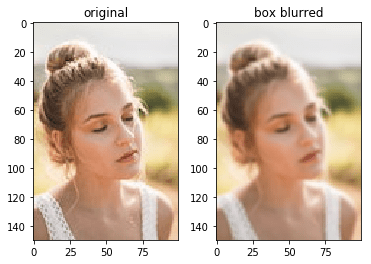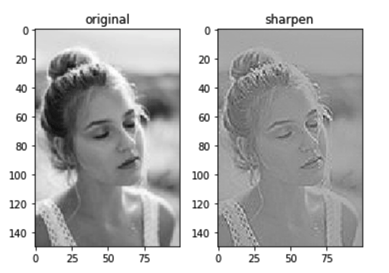Convolution is a process used for applying general-purpose filter effects like blurring, sharpening, embossing, edge detection, and more.
To understand convolutions we must first understand what a convolution matrix is, also referred to as kernel. Take for example the blurring filter. In blur filter, we set each pixel to the mean of its neighbouring pixels. Take a look at the below averaging operation. We replaced 227 with 225.
This is a simple blur filter. We repeat this for all pixels in the image. For corner pixels, we either ignore it or use the immediate neighbour pixels. The matrix representation of each 3×3 window on which we apply our filter looks like:
The blur operation can be represented as
h0 = (h0 + h1 + h2 + h3 + h4 + h5 + h6 + h7 + h8 ) / 9
Now if we were to represent the above operation using a matrix, we would get the below representation:

What happened above is, we multiplied each pixel to its corresponding pixel (which in this case is 1/9) in the convolution matrix, then summed it up to get the value of the centre pixel. This process is called Convolution represented by the symbol * with a circle around it. The second matrix is called a kernel, mask or a convolution matrix.
The above convolution operation can be represented mathematically as below:
where, F(x,y) is the output image, f(x,y) is the original image, h(i,j) is the kernal.
The below code perform convolutions in python.
import numpy as np
from scipy.ndimage.filters import convolve
a = np.array([[228, 227, 222],[228, 227, 222],[228, 227, 222]])
b = np.array([[1/9, 1/9, 1/9],[1/9, 1/9, 1/9],[1/9, 1/9, 1/9]])
print(convolve(a, b))
--------
#the output would be like
array([[227, 225, 223],
[227, 225, 223],
[227, 225, 223]])
#the corner pixels used only 4 or 6 pixels.
For coloured images, we perform convolution on each colour space separately and then merge them together. Applying the blurring convolution on a full image we get the below result.
The code used for the above processing is:
import matplotlib.pyplot as plt
import numpy as np
from skimage.io import imread
from scipy.ndimage.filters import convolve
img = imread("beautiful-woman.jpg")
box_blur_kernel = np.array([[1/9, 1/9, 1/9],
[1/9, 1/9, 1/9],
[1/9, 1/9, 1/9]])
image_copy = img.copy()
image_copy[:,:,0] = convolve(image_copy[:,:,0], box_blur_kernel)
image_copy[:,:,1] = convolve(image_copy[:,:,1], box_blur_kernel)
image_copy[:,:,2] = convolve(image_copy[:,:,2], box_blur_kernel)
fig, ax = plt.subplots(ncols=2)
ax[0].set_title("original")
ax[0].imshow(img)
ax[1].set_title("box blurred")
ax[1].imshow(image_copy)There are many other kernels for various image processing operations.
Gaussian blur
Edge detection
This one will require the image to converted to grayscale first before convolution.
Sharpen image
Emboss Image
References:
- https://en.wikipedia.org/wiki/Kernel_(image_processing)
- https://en.wikipedia.org/wiki/Gaussian_blur
Sample Image:
- https://www.pexels.com/photo/close-up-photo-of-woman-with-her-eyes-closed-2351707/












